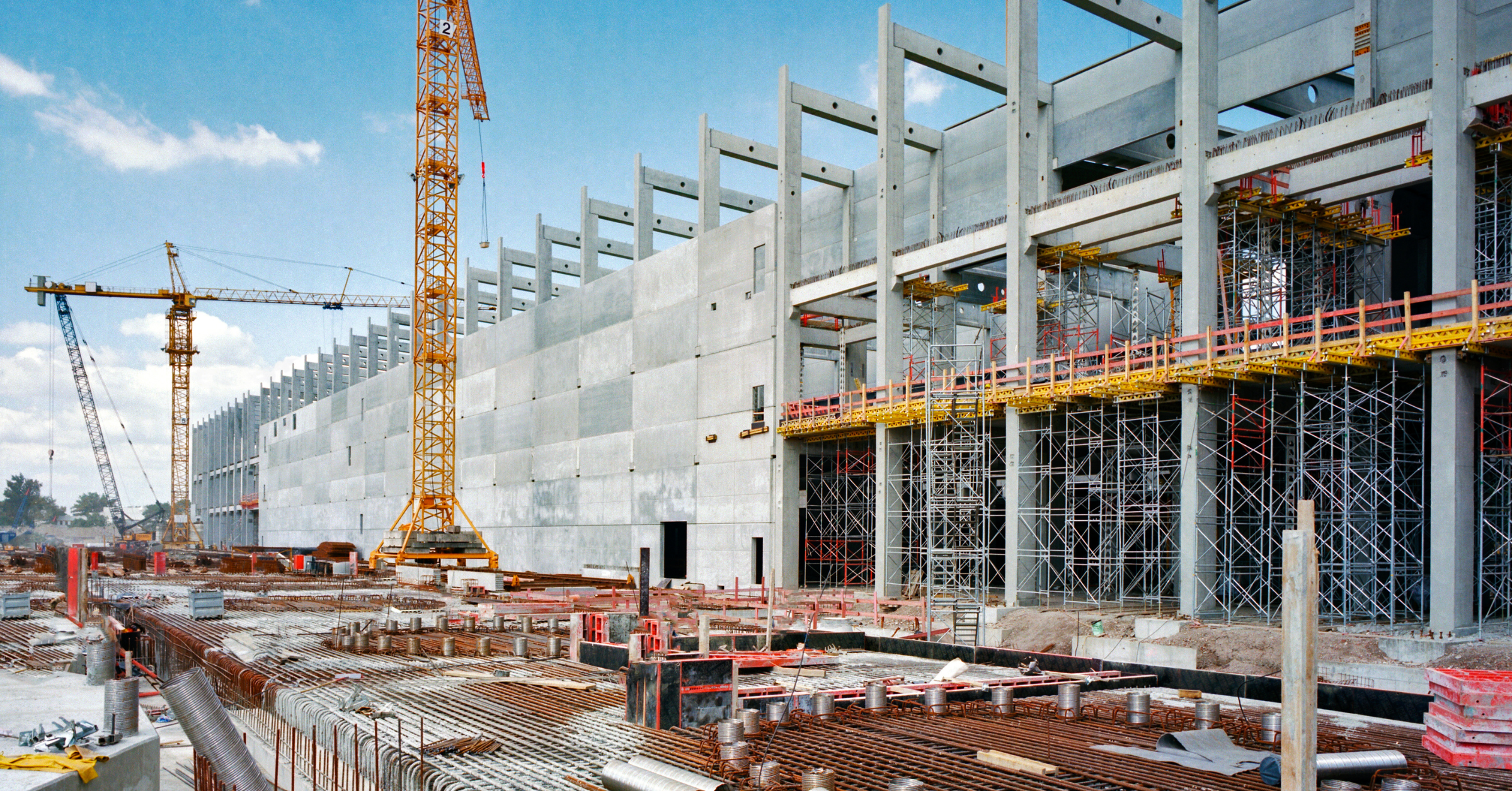Since July 2008, Special Inspections have been required for all New York City construction projects. Understanding what Special Inspections will be required and when they should be scheduled is vital to meeting your target dates and ensuring an efficient closeout process. Therefore, Milrose’s in-house inspection experts recently hosted a webinar to provide our clients with an overview of the types of inspections required for NYC construction projects and how to best streamline the process.
Read on as technical experts from Milrose’s in-house portfolio of companies— Randy Bennett, President of Integrated Group, Jon Colatrella, PE and Executive Director of MEP & Forensic Engineering at Howard L. Zimmerman Architects & Engineers, D.P.C., and Deoroop Matapersad, Associate Director of Forensics at Howard L. Zimmerman Architects & Engineers, D.P.C.—provide answers to the attendee questions submitted during last month’s Navigating the NYC Special Inspections Process Webinar.
QUESTION: Can the Architect of Record (AOR) or Engineer of Record (EOR) perform Special Inspections?
ANSWER: Yes, as long as the design professional is working for a registered Special Inspection Agency and the Design Professional of Record is not a conflict of interest. The registered Design Professional of Record must not engage in any activities that may conflict with his/her objective, judgement, and integrity.
The design firm need not create a separate entity to register to become a Special Inspection Agency, although that is an option. The Special Inspection rule prohibits anyone from serving as a director of more than one agency and prohibits a director from working at multiple agencies performing Special Inspections. Per Section(c)(6): “…directors must not be retained by any other agency that provides special inspection or testing services.”
QUESTION: Must all Special Inspectors be registered with the Department of Buildings (DOB)?
ANSWER: Yes. All Special Inspection Agencies must be registered with the DOB.
QUESTION: Once a Special Inspection Agency has been retained for a project, the owner is aware that it is their responsibility and assumes the General Contractor will coordinate with the agency to ensure inspections are being performed in a timely manner. What are the key milestones that an owner should be aware of to ensure that both the inspections are being conducted properly and that there will not be any issues when the job is ready for closeout?
ANSWER: At the time when the General Contractor pulls the permit and work has commenced, there are some key things that need to be done. First, the Special Inspector should be informed. Secondly, it is highly recommended that the owner, General Contractor, and Special Inspection Agency hold a kickoff meeting to establish project expectations and the timing of when the Agency should be present to review the work. In the event the meeting does occur before work has commenced, the owner should be vigilant in obtaining the inspection reports from the Agency—dependent on the job progress. Sometimes a “friendly” reminder to the General Contractor is all it takes to ensure the inspection requirements are fulfilled and that the job goes smoothly.
QUESTION: Do Special Inspectors inspect door fire ratings as part of the Fire-Rated Construction special inspection?
ANSWER: As per BC 110.3.4, fire-resistance-rated construction inspections involve inspections of the following elements: fire-resistance-rated partitions, floors, ceilings, shafts, and fire shutters. Fire-ratings of doors are not included.
QUESTION: Is a Post-Installed Anchor Special Inspection required for sprinkler, standpipe, natural gas piping, medical gas, and general plumbing?
ANSWER: A Post-Installed Anchor Inspection would be necessary if any expansion/adhesive anchors are going to be specified to anchor any piping elements to the existing conditions. Then it would be recommended that the substrate and anchorage elements also be verified. This requirement would be designated by the EOR/AOR.
QUESTION: Do Post-Installed Anchors need to be ICC-ES certified?
ANSWER: In accordance with Buildings Bulletin 2016-005, any Post-Installed Anchors in masonry should have an evaluation report published by the ICC-ES—or an acceptable proof load test report—which conforms to the proof load testing criteria outlined in the Bulletin.
QUESTION: Did you need to test at every bracket?
ANSWER: Buildings Bulleting 2016-005 suggests that” “A minimum of 20% or three test, whichever is greater, shall be randomly selected and tested,” but ultimately the frequency and sample size should be determined by the EOR/AOR.
QUESTION: Is a Special Inspection required if the helical tie anchors are used as additional retrofit wall ties?
ANSWER: If there is a “Masonry” Inspection that has been filed for the job, then the retrofitted wall ties should be documented for special inspection purposes.
QUESTION: Is a Tenant Protection Plan (TPP) required to be filed for each discipline filing such as for Arch, Mech, or Fire Protection, or is one TPP sufficient for the entire project?
ANSWER: A Tenant Protection Plan (TPP) is required to be filed for each separate filing that will be submitted to the Department of Buildings (DOB).
QUESTION: What DOB NOW Work Types currently require a Tenant Protection Plan (TTP)?
ANSWER: The following DOB NOW Work Types require a TPP:
- Antenna
- Boiler
- Curb Cut
- Earthwork
- Foundation
- General Construction
- Mechanical
- Plumbing
- Sign
- Sprinkler
- Standpipe
- Structural
- Support of Excavation
QUESTION: Would “General Construction (GC)” include a common area refresh—such as paint, carpet, light fixtures—in a residential building, co-op, or condo?
ANSWER: If the job is to be filed as a GC work-type and will be affecting residents of the building, then that would most likely trigger a TPP requirement.
QUESTION: Is a Tenant Protection Plan (TPP) Special Inspector required to be identified by the TPP Design Applicant every time a TPP is filed or required? Are there specific triggers/best practices?
ANSWER: The Tenant Protection Plan (TPP SI should be designated and specified by the AOR/EOR.
QUESTION: I have an upcoming façade repair project at a college dormitory. We will be starting work in June 2024 and expect to complete the project in February 2025. I understand a TPP is required for this work. Is it required that we have weekly TPP inspections during construction, even during the months when the dormitory building is unoccupied?
ANSWER: Although the dormitory may be unoccupied with residents, working personnel may still be present. By the stipulations are issued by the DOB, the TPP inspections should be conducted once per week during the course of active construction activities.
QUESTION: Are Special Inspections required for Occupant Protection Plans (OPP) for commercial buildings?
ANSWER: The OPP is required for non-residential projects as per 2014 BC 3303.10 and are NOT filed with or reviewed by NYCDOB. A copy of the OPP must be available on site for review by authorized personnel and NYCDOB inspectors. In this scenario, Special Inspections are not required.
QUESTION: As an owner or third-party building manager, we regularly see our properties’ Special Inspection Reports during various ongoing projects. In the event the Special Inspector notes a “Non-Conformance” on one or multiple items within a report, is it always necessary for the Contractor to remove and redo the specific work in question?
ANSWER: It is not always necessary for the Contractor to completely redo the work, nor is it always the only option. When any non-conformance(s) are found, the first step is to review them with the AOR/EOR. In many cases, the Special Inspector has to note a non-conformance simply because it did not meet the specifics of the plans and/or associated details that may be called out on the plan. However, many times the installed work can be an acceptable alternative. Then, the AOR/EOR simply needs to review and accept the work to satisfy the non-conformance.
QUESTION: Can a Special Inspector stop a job for non-compliance? Do they have a fiduciary responsibility to report it to the DOB?
ANSWER: The Special Inspector does not have the authority to stop the job based on the non-conforming items that have been documented. These items are usually relayed to the Registered Design Professional (RDP) and should be reported to the building official (DOB).
QUESTION: Who typically performs the Final Inspection (third-party, AOR, EOR, etc.)? Is it only done once at the completion of all construction?
ANSWER: Final inspection is usually performed by the AOR/EOR after all work authorized by the permit is completed—and no later than one year from the date of the expiration of the last valid permit. However, we consider this a cumulative inspection since all the other TR-1 inspection items are performed throughout the lifespan of the job, verifying that the work has been done in conformance with the construction documents.
Leverage our Experience and Expertise
Do you have additional questions related to the special inspections process? Our in-house team of inspection experts are here to help! Drop us a line and learn more about how our comprehensive portfolio of special and progress inspection services can save you significant time and money on your next construction project.
Click to view our webinar in its entirety.







